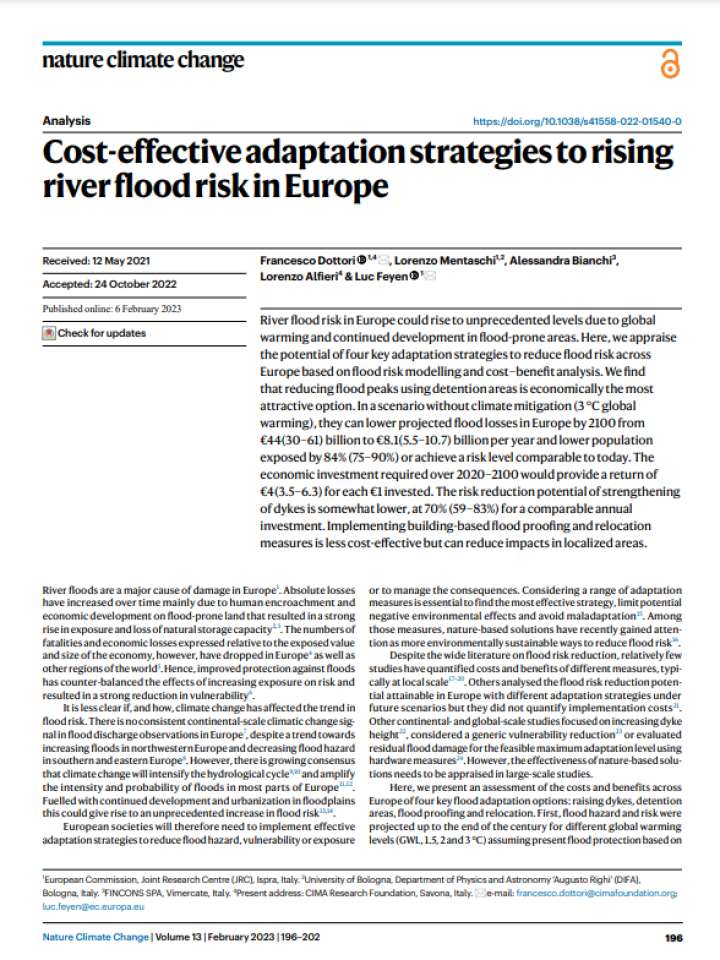Cost-effective adaptation strategies to rising river flood risk in Europe
This paper appraises the potential of four key adaptation strategies to reduce flood risk across Europe based on flood risk modelling and cost–benefit analysis. River flood risk in Europe could rise to unprecedented levels due to global warming and continued development in flood-prone areas.
The researchers find that reducing flood peaks using detention areas is economically the most attractive option. In a scenario without climate mitigation (3 °C global warming), they can lower projected flood losses in Europe by 2100 from €44(30–61) billion to €8.1(5.5–10.7) billion per year and lower population exposed by 84% (75–90%) or achieve a risk level comparable to today. The economic investment required over 2020–2100 would provide a return of €4(3.5–6.3) for each €1 invested. The risk reduction potential of strengthening of dykes is somewhat lower, at 70% (59–83%) for a comparable annual investment. Implementing building-based flood proofing and relocation measures is less cost-effective but can reduce impacts in localized areas.
Explore further
